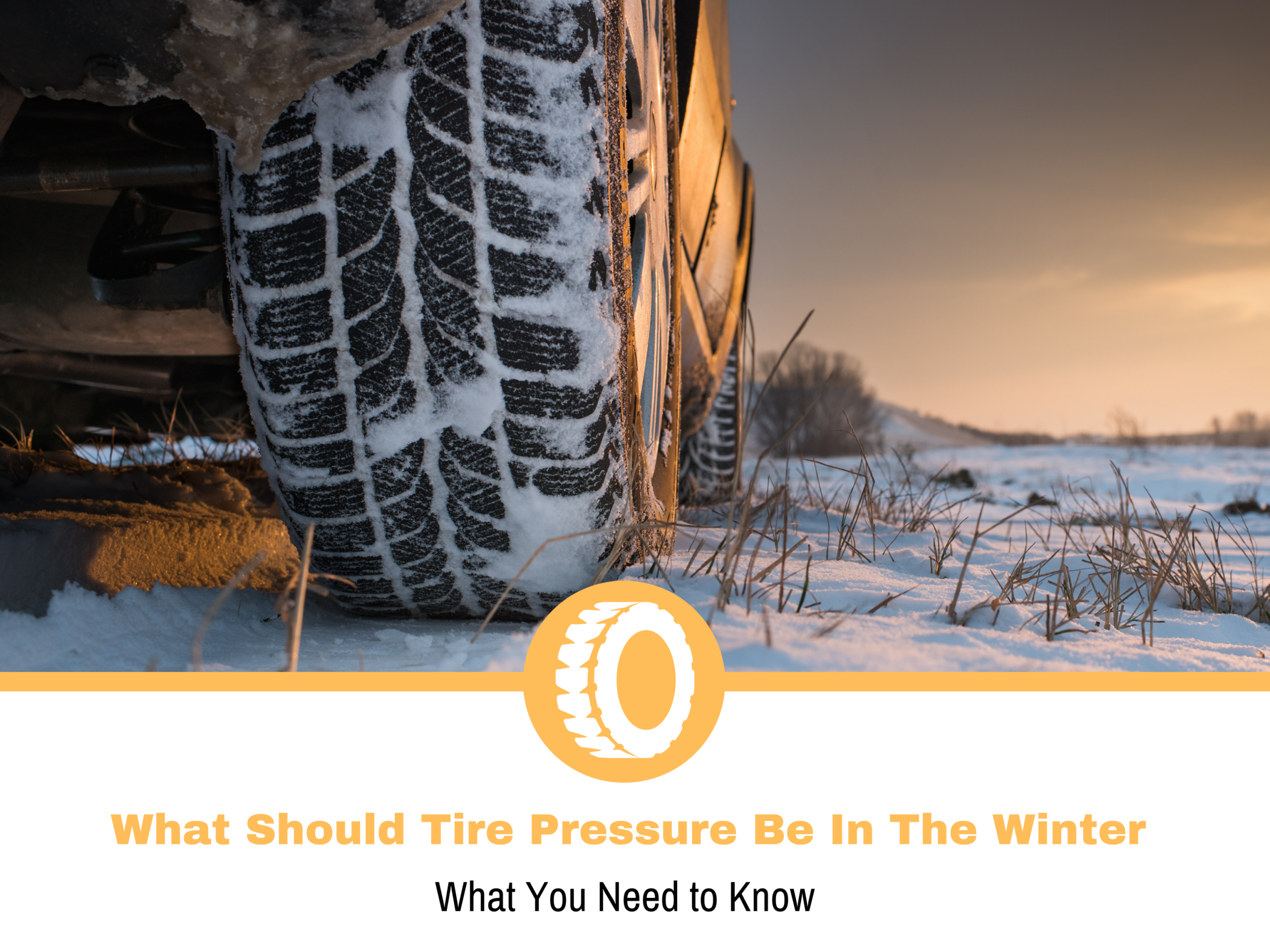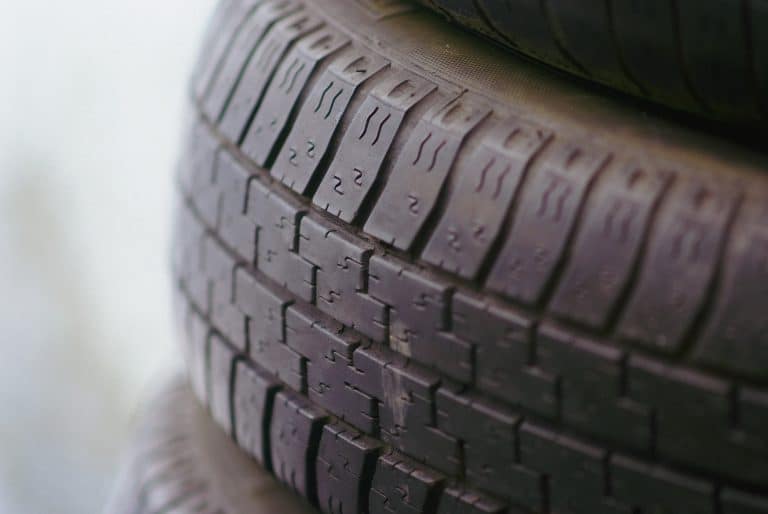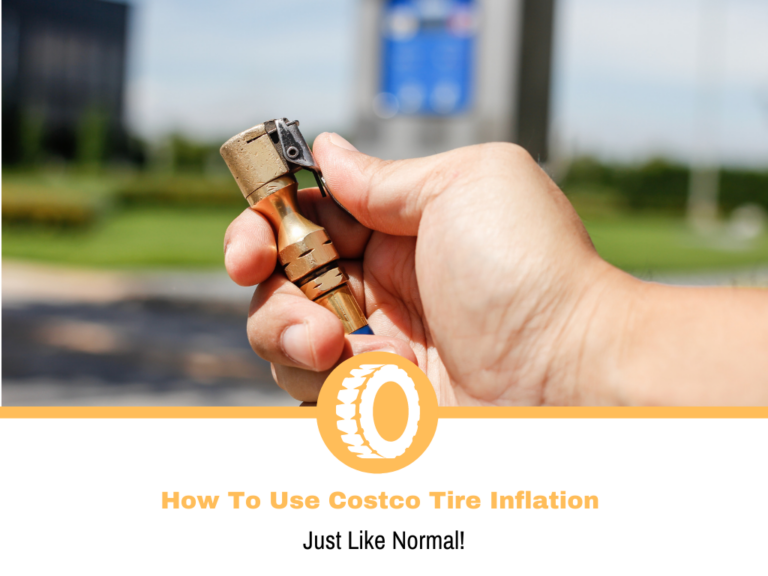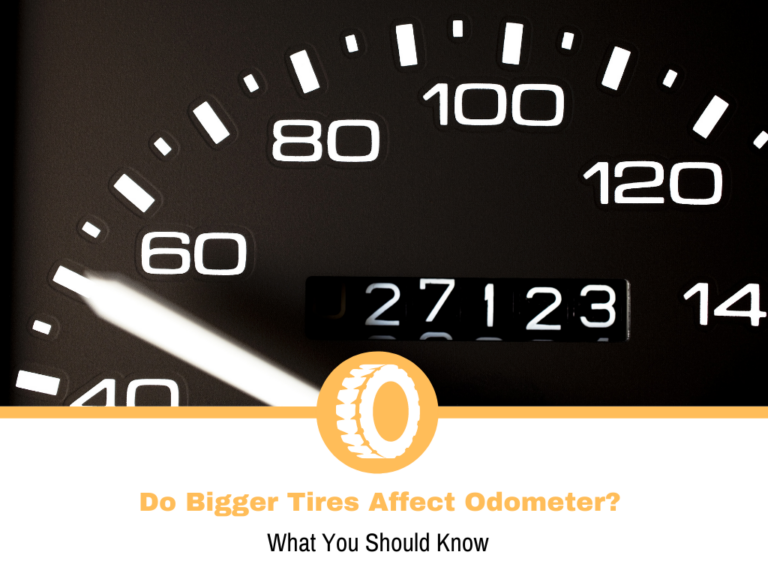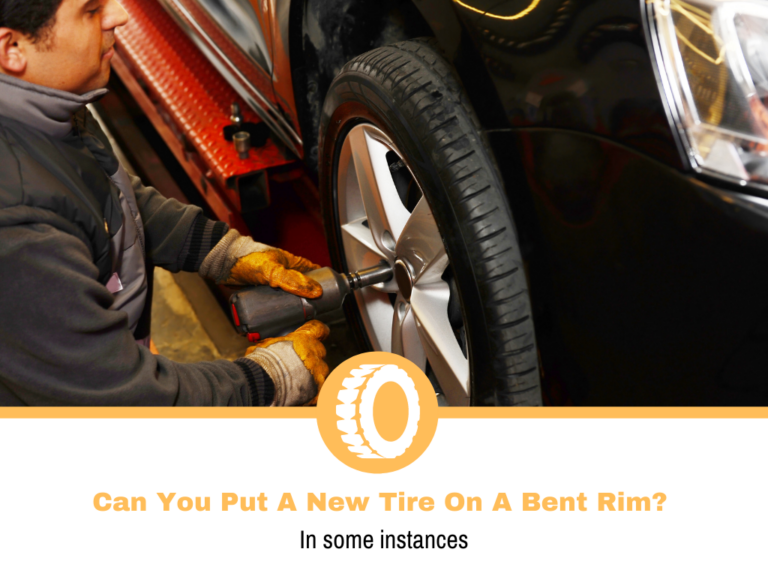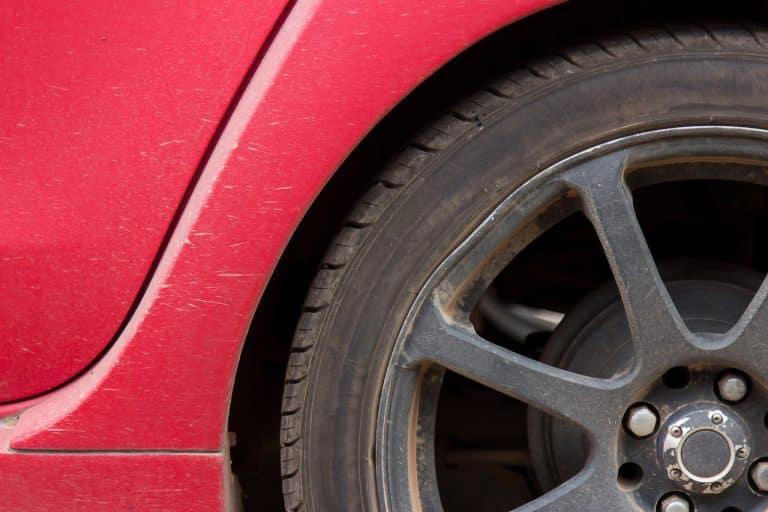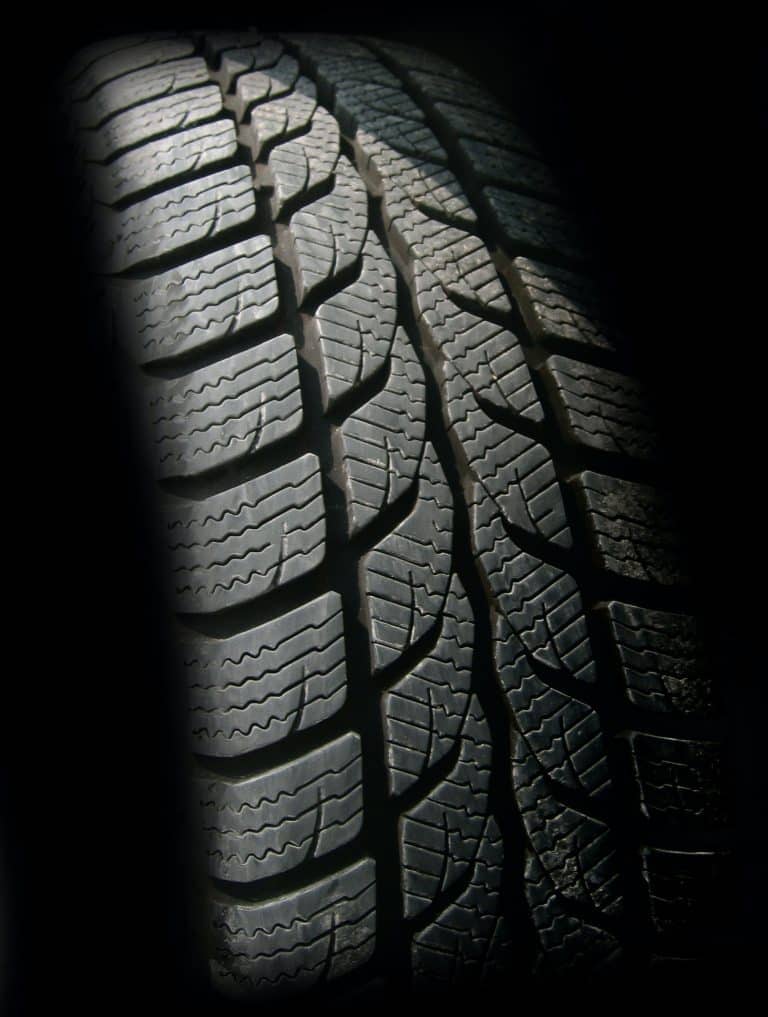What Should Tire Pressure Be In The Winter?
Tire pressure and performance changes can happen as a result of cold temperatures and winter conditions, and these changes must be monitored.
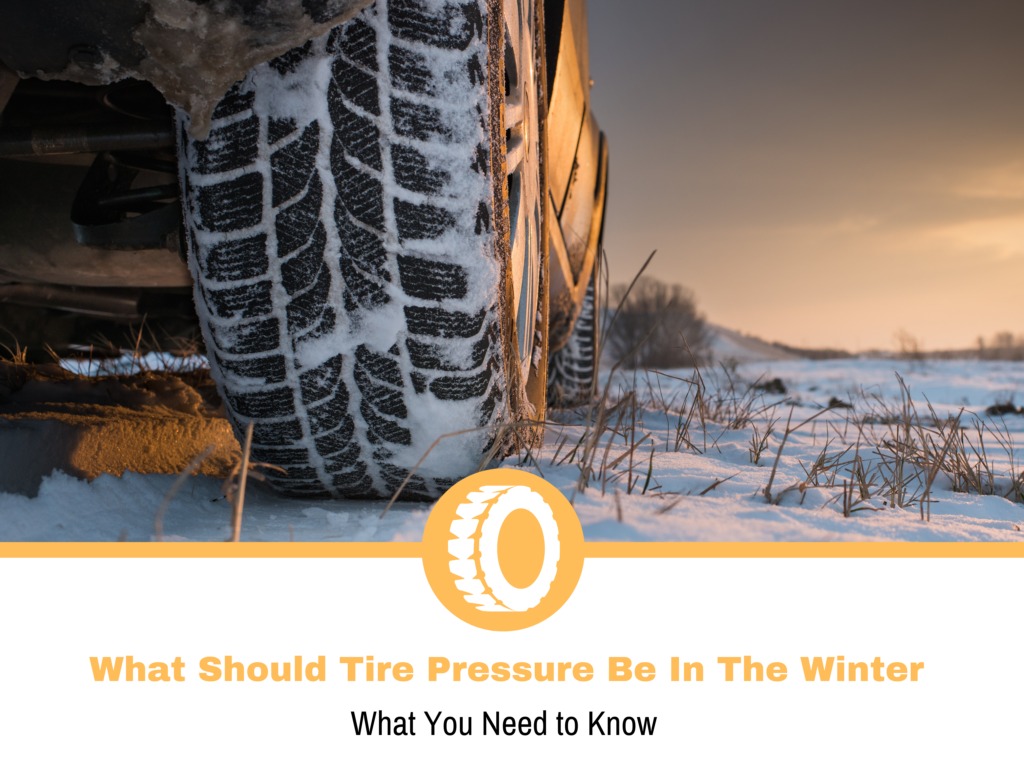
The actual PSI level of your tire will be determined by the specs of your vehicle; however, in the winter, you should keep it between 30 and 35 PSI. This helps to ensure that your tires are performing at their peak levels in terms of safety, performance, and fuel efficiency.
Tire pressure changes significantly depending on the tire type and driving conditions. As winter approaches, it is critical to understand the optimum tire pressure in order to maximize the performance of your vehicle. Anyone who has driven in the winter with their tire pressure gauge flashing will understand how quickly a tire loses air due to the freezing temperatures. This article will show you how to properly inflate your tires in preparation for winter driving.
How Cold Weather Affects Tire Pressure
Tire pressure can drop by one PSI for every 10 degrees Fahrenheit that the temperature drops in the winter. In order to keep your tires properly inflated when the weather cools, you must regularly check their inflation levels.
Tire deflation can occur as a result of colder weather, which can result in poor traction on ice or icy roadways. The presence of a tire pressure monitoring system (TPMS) may alleviate your concerns, as most automobiles are equipped with sensors that monitor air pressure and inform drivers when something is wrong with their vehicle.
Many people believe that air is flowing from inside their tires, which is not correct. When it gets colder, the air in the tire condenses, rather than expands like a balloon. There is a reduction in tire pressure, which causes concerns for the driver as well as for his or her vehicle. This results in a decrease in PSI, which might result in lower tire performance.
Is Lower Tire Pressure Better In The Winter?
Reduced tire pressure (10 to 15 PSI lower than normal) might help you handle icy roads, especially when the plow hasn’t been through yet. However, once those roads are plowed and sanded, the decreased pressure will be a major barrier. Lower pressures expand the rubber in contact with the ground. This helps disperse the weight of your car across more snow. That’s perfect for back roads and driveways that don’t get plowed often.
However, when you reach well-maintained roads, that decreased pressure will make it difficult to steer consistently or properly. All that additional rubber will make your tires handle poorly, but that’s not the worst of it, due to underinflation, the tires are prone to overheating. It doesn’t take much for your tires to get hot enough to explode or pop when driving in a snow storm. In an emergency, decreased tire pressure can help but generally, you want to keep your PSI between 30 and 35 PSI.
Effects of Low Tire Pressure in Driving Dynamics
Though driving with reduced tire pressure can help you navigate through uneven roads in winter, providing you additional traction on these conditions, there are still direct and indirect consequences in terms of safety, fuel efficiency, and your tires’ life expectancy.
Braking is affected
It is possible that deflated tires will increase braking time and cause skidding on wet and surfaces.
Fuel economy
Underinflated tires can reduce gas mileage by approximately 0.2 percent for every one PSI drop in the total pressure from all tires.
Reduced life span on tires
Underinflation shortens tire life and makes them more susceptible to damage, forcing you to buy more tires more frequently.
SUV & Truck Tire Pressure In The Winter
Tire pressure should be maintained at a greater level in the winter to offer a safe comfortable ride, more so to heavier vehicles such as SUVs and trucks. Increasing tire pressure in SUVs and trucks is not only important for safety but also improves tire performance and extends the life of the tires.
The tire pressure of SUVs and trucks should be greater in the winter than the tire pressure of summer tires. It is estimated that the tire pressure in winter tires should be between 35 and 40 PSI in order to adapt to the larger load capabilities and colder temperatures that will affect the tire pressure in winter tires.
Even though the average vehicle in this category will operate with tires under 35 PSI for almost the whole year, more air must be supplied to tires in order to maintain performance and keep tires safe on the road in winter. For these vehicle types, we recommend a maximum tire pressure of 40 PSI, and anything higher than that may pose a risk to both your tires and your vehicle’s performance. If you overinflate a tire, it might become overly hard or firm, causing your vehicle’s suspension to suffer as a result of the excessive pressure.
In addition to having suspension problems, your tires will lose the traction on the road that you so sorely need in icy conditions, as well. Maintaining pressure levels between 35 and 40 PSI can help you maintain optimum vehicle control, handling, and steering response when driving in subzero temperatures.
Sedan Tire Pressure In The Winter
Since sedans are lighter to drive, their tire pressure can be lower than that of other vehicles. It all boils down to a vehicle’s load capacity and how heavy they are driving on the road on a consistent basis on the highway.
It is ideal to increase the pressure in your tire by 1-3 PSI beyond the recommended amount set by the manufacturer of your vehicle. You should be adequately protected because this factor accounts for the amount of PSI you are losing as a result of the temperature dips.
Sedans are significantly lighter cars than SUVs and pickup trucks, requiring less PSI to maintain high-quality driving performance. The predicted PSI should be in the range of 30 to 35 PSI. Although this is higher than the original PSI levels of the tires on most sedans, it is necessary due to the cooler temperatures inside the vehicle, which causes the air to condense inside the vehicle.
Tires are intended to offer traction, but they are unable to do so if they do not have air in them. If you’re driving on thin ice, you’ll need to put additional air in your tires to keep them from breaking down. The importance of tire inflation for your safety on the road cannot be overemphasized.
Given that sedans have lower levels of inflation, you have a little more wiggle room if you overinflate the tires before you start experiencing problems. Nonetheless, over inflation of winter tires is not suggested because the softer winter tire material is more prone to blowouts or flat tires when overinflated.
Checking The Tire Pressure
Even though a slight change in tire pressure is difficult to detect with the naked eye, it can have a significant impact on your driving performance.
Even if temperatures remain steady during the winter, tires can lose pressure over time. As a precaution, it is recommended to check tire pressure every other time you visit the gas station, and especially when your tire pressure monitoring system (TPMS) flashes.
Know the recommended tire pressure
Find the recommended tire pressure in your owner’s manual, or on a sticker attached to your door jamb, glove box, or fuel hatch. When it comes to passenger cars, the recommended tire pressure is usually between 30 and 35 PSI. Using a recommended tire pressure tool can help you determine your exact tire pressure.
Check tires before driving
For an accurate reading, check your tire pressure before you start driving, not after you finish. Setting the cold tire pressure is the term used to describe this procedure. As an example, if your suggested tire pressure is 32 PSI, that implies that pressure should be 32 PSI before you put rubber on the road.
Get your pressure gauge
Tire pressure gauges are readily available for purchase at most large box retailers for a few dollars per gauge. “Pencil” style gauges are the cheapest and have a small stick that pops out with the tire pressure reading on the other end of it. Digitized tire pressure gauges are a little more expensive, but they are also exceedingly simple to use and read.
Unscrew the valve stem cap
This is the small screw-cap that can be found on the valve stem of your wheel in any of the following colors: black, blue, green, or silver. It should be obviously visible from the outside of your car’s exterior.
Put tire pressure gauge to valve stem
Follow the directions that came with your tire pressure gauge to ensure proper tire pressure. If the gauge makes a hissing sound when you insert it, it is possible that it is not correctly seated on the valve stem. Adjust the tilt of the gauge until the hissing is no longer audible.
Screw and tighten the valve stem cap
Repeat the procedure for each tire, taking note of the tire pressure readings as you go along.
Inflate the tires if necessary
There’s a fair probability that you’ll need to inflate your tires at least once over the winter. If your tire pressure is low, look for an air pump in your area. Continue to add air until your tire pressure reaches the appropriate level, or bring your vehicle to your local auto care.
Conclusion
Winter driving conditions can be challenging for your vehicle. It is possible, however, to prevent obtaining a flat tire even during the coldest winter months if you have knowledge and planning ahead of time. Just remember to check the tire pressure on a frequent basis, especially if the temperature is changing significantly in the area.
